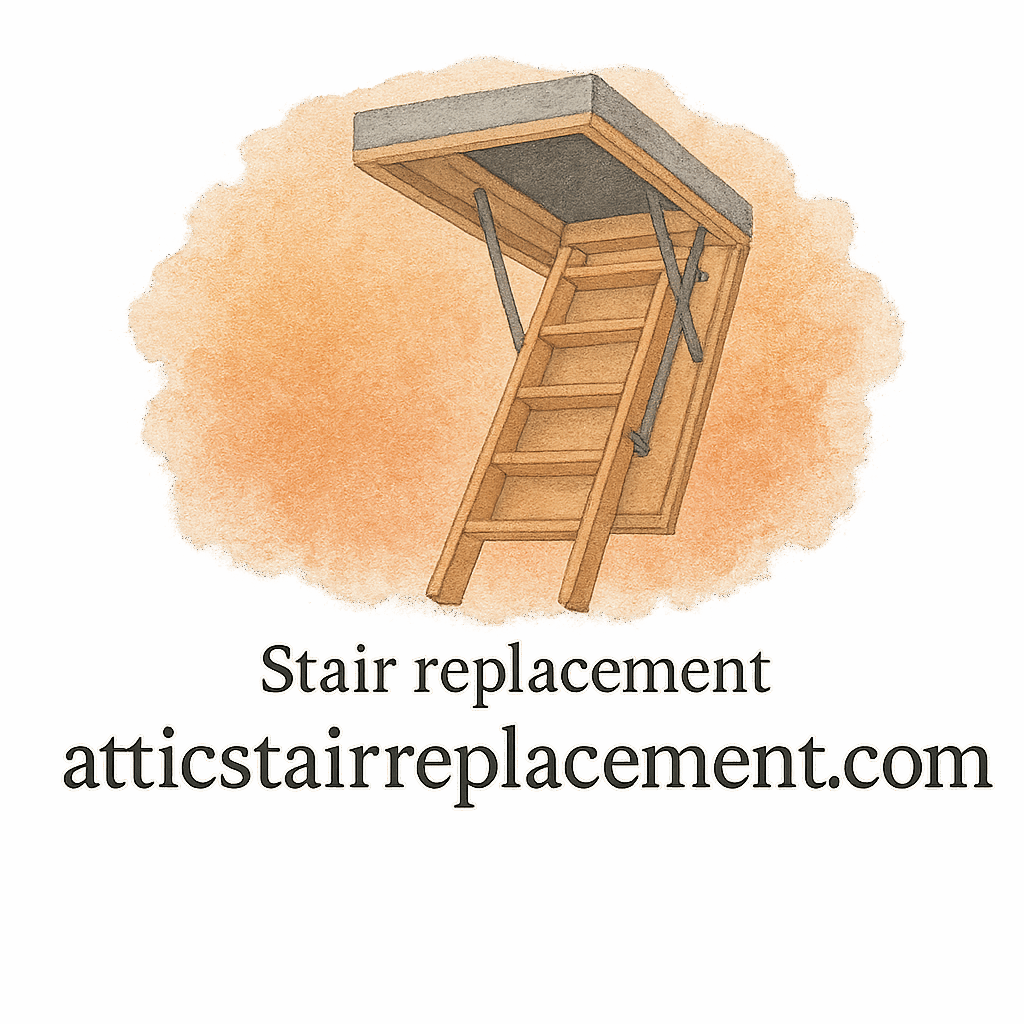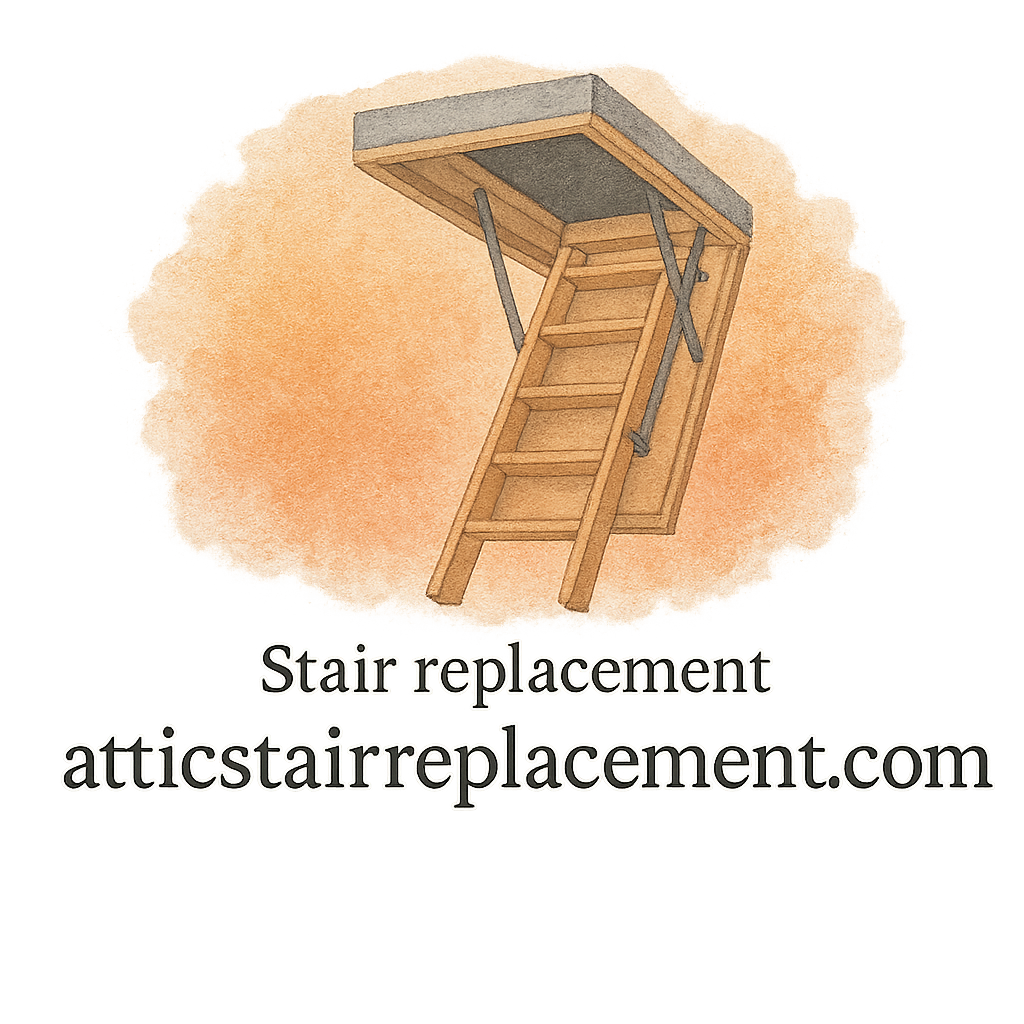Introduction
Replacing your attic stairs might feel like a one-and-done project, but here’s the truth: maintenance is where most homeowners slip up. Attic stairs, just like any other moving part in your home, demand care. Skip a few steps, and you’ll find yourself facing squeaky hinges, safety hazards, or even a full replacement much sooner than expected.
In this article, we’ll uncover the 11 costly mistakes in attic stair replacement maintenance that homeowners often make. Avoiding these pitfalls doesn’t just save you money—it keeps your attic stairs safe, strong, and durable for years to come.
Why Proper Attic Stair Maintenance Matters
Safety Concerns
Think of your attic stairs as the bridge to your storage space. If that bridge is shaky, unstable, or poorly maintained, you’re risking injuries. A loose screw or cracked tread could mean a painful fall.
Longevity of Your Investment
Installing new attic stairs isn’t cheap, especially if you’ve opted for heavy-duty or custom designs. Regular upkeep helps you protect that investment, preventing unnecessary repairs.
Home Value and Comfort
Potential buyers notice details. Well-maintained attic stairs reflect good home care. Beyond resale, you’ll also enjoy smoother use and easier access to your attic space.
Mistake #1: Ignoring Regular Inspections
Signs of Wear and Tear
Skipping inspections is like driving your car without checking the tires. Over time, parts loosen, wood cracks, and metal bends. Regular checkups let you spot small problems before they escalate.
Preventing Bigger Issues Early
Catching a frayed cord or loose spring early can save you from costly maintenance and repair work later. Mark your calendar for at least two seasonal inspections each year.
Mistake #2: Skipping Lubrication of Moving Parts
Why Hinges and Springs Need Care
Hinges, pulleys, and springs keep your attic stairs functional. Without lubrication, they wear out quickly and start making those irritating squeaks.
Recommended Maintenance Schedule
A simple application of silicone-based lubricant every six months keeps everything moving smoothly. Just avoid oil-based sprays—they attract dust and grime.
Mistake #3: Using the Wrong Cleaning Products
Safe Cleaning Practices
Bleach or harsh chemicals can damage wood and corrode metal. Stick to mild soap and water or a wood-safe cleaner.
Materials That Require Special Attention
Wood requires gentle care, while aluminum or steel stairs may benefit from rust-prevention sprays. Always check manufacturer recommendations before you clean.
Mistake #4: Overloading the Attic Stairs
Weight Limits and Safety Risks
Every attic stair has a weight rating. Exceed it, and you risk bending the frame or worse—a collapse.
Choosing Heavy-Duty Options
If you store bulky items like boxes of books or tools, consider upgrading to a heavy-duty model. It’s better to invest in stronger stairs than to risk repeated repairs.

Mistake #5: DIY Fixes Without Proper Knowledge
Common DIY Errors
Tightening the wrong screw, replacing a spring with the wrong size, or using cheap materials—these DIY blunders can cause long-term damage.
When to Call a Contractor
Sometimes, hiring a professional contractor ensures the job is done right the first time. For complex fixes, it’s worth the peace of mind.
Mistake #6: Neglecting Loose Hardware
Checking Bolts and Screws
Hardware naturally loosens with use. If ignored, it can cause stairs to wobble, squeak, or fail under pressure.
Preventing Falls and Failures
Make a habit of checking bolts, screws, and brackets monthly. Tightening them takes minutes but prevents accidents.
Mistake #7: Poor Installation Practices
The Impact of a Bad Install
Even the strongest attic stairs won’t perform well if they’re installed incorrectly. Poor alignment leads to uneven weight distribution and faster wear.
Hiring Experts for Quality Work
Instead of rushing a DIY installation, consider consulting expert advice. Professional installation ensures your stairs last longer and perform better.
Mistake #8: Ignoring Squeaks and Strange Noises
What Those Sounds Mean
Squeaks aren’t just annoying—they’re often early warning signs of friction, loose parts, or even structural problems.
Quick Fixes vs. Long-Term Solutions
Lubrication might quiet the noise temporarily, but if it persists, you may need to replace worn parts or consult a pro.
Mistake #9: Not Protecting Against Moisture Damage
The Role of Attic Ventilation
Poor attic ventilation traps moisture, leading to wood rot, mold, or rust on metal components.
Preventing Rust and Rot
Install proper insulation and ventilation, and regularly check for leaks. Prevention is always cheaper than replacing damaged stairs.
Mistake #10: Choosing the Wrong Materials
Wood vs. Aluminum vs. Steel
Each material has pros and cons. Wood is affordable but prone to warping. Aluminum is lightweight but may dent. Steel is durable but heavier.
Matching Materials to Your Needs
Your choice should align with your usage, budget, and storage habits. Browse product reviews before making a final decision.
Mistake #11: Forgetting About Safety Accessories
Handrails and Non-Slip Pads
Simple add-ons like handrails or non-slip treads drastically reduce the risk of accidents.
Upgrading for Extra Protection
Think of accessories as preventive care. They’re inexpensive but offer big safety returns, especially for households with kids or seniors.
How to Prevent These Mistakes
Routine Maintenance Checklist
- Inspect for wear twice a year
- Lubricate hinges and springs every six months
- Tighten bolts and screws monthly
- Clean with gentle products
- Respect weight limits
- Monitor attic ventilation
Expert Advice and Resources
For more detailed tips, check out trusted resources on home improvement and expert guides. You’ll also find practical tips, guides, and advice on preventing mistakes.
Conclusion
Your attic stairs are more than just a ladder—they’re a gateway to valuable storage. But without proper care, small mistakes can snowball into expensive repairs or safety hazards. By avoiding these 11 costly mistakes in attic stair replacement maintenance, you’ll save money, protect your investment, and keep your home safe.
Take the time to inspect, clean, and maintain your attic stairs. And when in doubt, don’t hesitate to seek professional help or browse through expert resources. A little attention goes a long way.
FAQs
1. How often should I inspect my attic stairs?
At least twice a year—once before summer and once before winter.
2. Can I lubricate attic stairs with WD-40?
It’s better to use a silicone-based lubricant since WD-40 can attract dust and grime.
3. What’s the average lifespan of attic stairs?
With proper maintenance, most last 15–20 years or longer.
4. Are aluminum attic stairs better than wood?
It depends—aluminum is lightweight and durable, while wood offers a classic look but needs more care.
5. What should I do if my attic stairs squeak?
Start with lubrication. If squeaks persist, check for loose hardware or worn parts.
6. Can attic stairs be reinforced for more weight capacity?
In some cases, yes. But it’s usually safer to upgrade to a stronger or heavy-duty model.
7. Do attic stairs add value to a home?
Absolutely! Properly maintained attic stairs improve safety, functionality, and overall home value.


